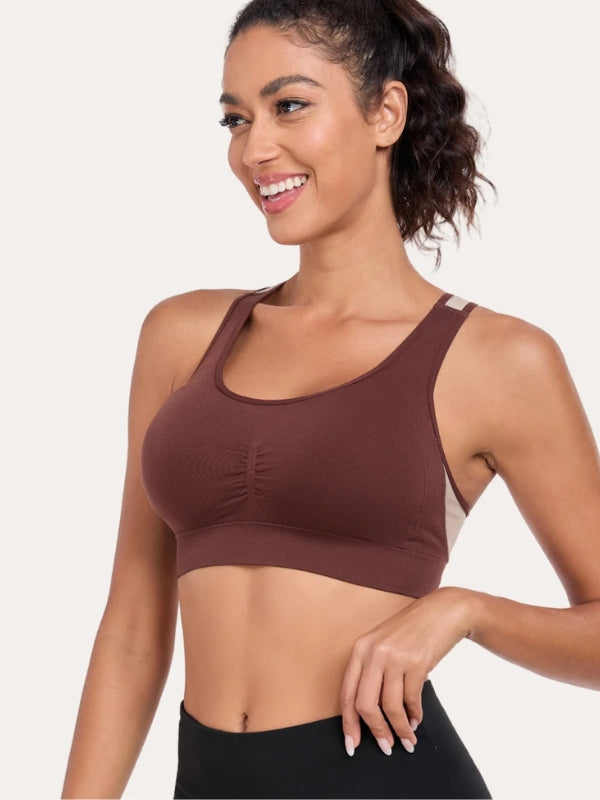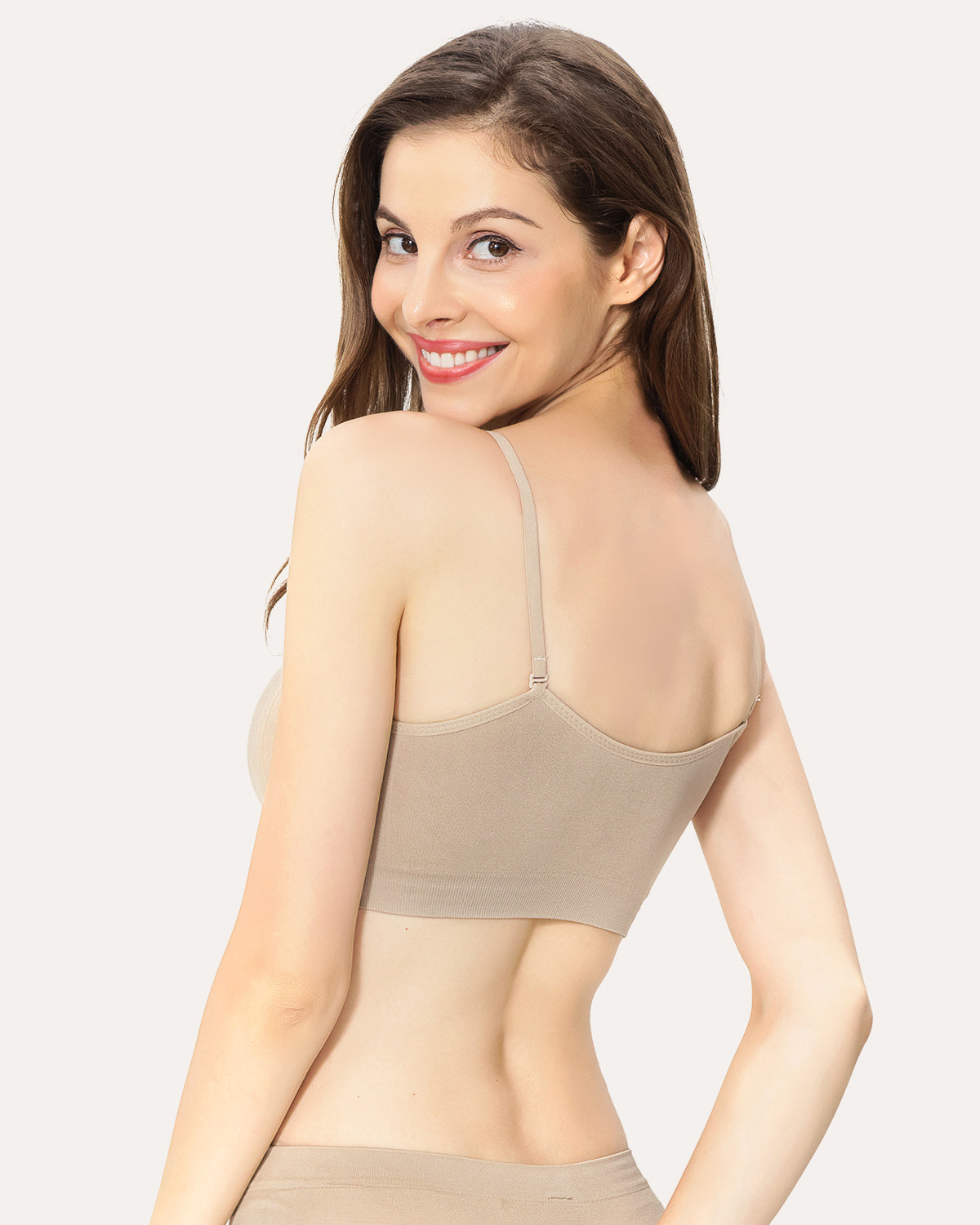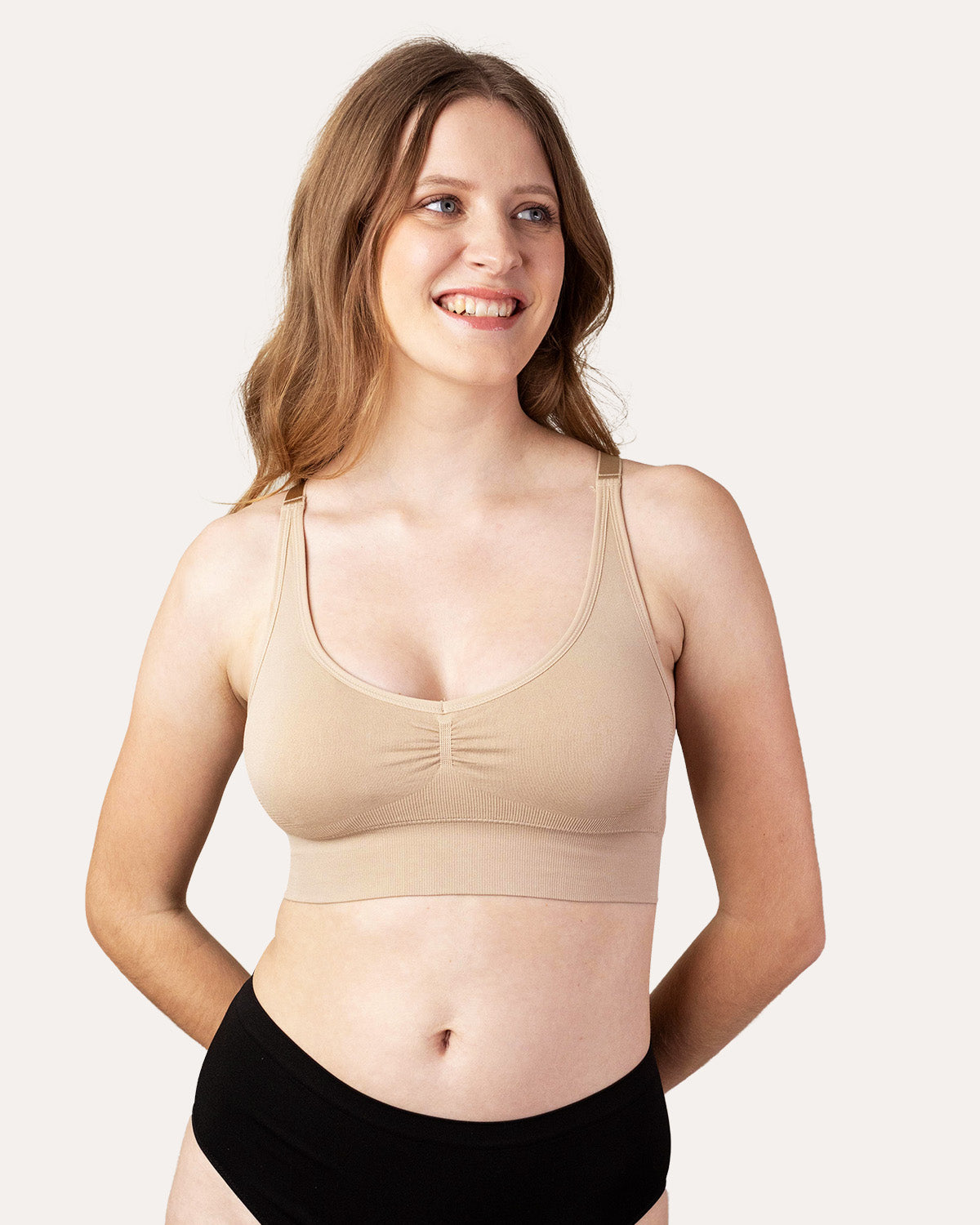
Exercising can boost endorphins and make you feel like you're taking care of your body. However, a recent study
suggests
that wearing certain sports bras could expose you to harmful chemicals.
The study discovered that some athletic shirts and sports bras from brands contain up to 22 times more bis phenol A than the safety limit set by California's Proposition 65. This law, established in 1986, informs people that products with high chemical levels can potentially harm the reproductive system or lead to cancer.
While this news may be concerning, it's not necessary to discard all your sports bras. Experts have provided information on the dangers of wearing such apparel and ways to reduce your exposure to the chemical in your daily life.

What is BPA?
Bisphenol A (BPA) is a chemical that imitates the effects of estrogen in the body. It can lead to various health issues, including breast cancer, infertility, and reproductive system problems in women.
Experts explain that BPA's ability to interact with the estrogen receptor is the primary reason behind its association with different health conditions. Estrogen plays a crucial role in the reproductive system and is often linked to conditions like PCOS and endometriosis. A dermatologist's study suggests that exposure to high levels of BPA could increase the likelihood of adults developing acne.
While acne can be influenced by multiple factors, wearing a sports bra can contribute to its occurrence. To minimize your time wearing it, consider limiting your activities while wearing a sports bra.
According to dermatologist the primary route of BPA entry into the body is through consuming food and beverages containing the chemical. Removing your sports bra may not directly improve your health, and there's no scientific evidence linking it to cancer.

Who might want to avoid BPA?
The exact amount of bisphenol A (BPA) that is absorbed through the skin when wearing a sports bra is unclear, according to experts. However, it is possible that wearing tight-fitting clothes while sweating could potentially increase the absorption of the chemical.
Although the issue is concerning, dermatologist mentioned that we currently do not know if wearing clothing containing BPA can raise the chemical's levels in our bodies.
While a sports bra is not the primary source of BPA exposure, some individuals may prefer to exercise caution regarding their level of exposure. Dermatologist suggests avoiding such products, especially during pregnancy or when trying to conceive.
Additionally, dermatologist advises individuals undergoing body changes like breastfeeding and puberty to be more cautious about their exposure to BPA. Dermatologist also notes that exposure during puberty and pregnancy can be particularly concerning, while healthy adults are generally less susceptible to health problems caused by bisphenol A.

Why should you avoid BPA?
Bisphenol A (BPA) is a chemical commonly used in the production of plastic items like bottles and shatterproof windows. According to dermatologist, widespread exposure to BPA exists, and it can have long-lasting effects, particularly on fetuses and children. Research indicates that BPA exposure can contribute to health conditions like diabetes and high blood pressure.
Dermatologist emphasizes that exposure to BPA can result in lifelong health problems. She highlighted the importance of manufacturers being aware of the risks associated with using BPA in clothing.
Dermatologist stated that exposure to BPA may lead to fertility issues, behavioral changes, and estrogen-sensitive illnesses like breast cancer. He also emphasized the vulnerability of fetuses to the effects of chemicals like BPA and advised pregnant women to take extra precautions to minimize their exposure.
Considering the high levels of BPA found in some clothing materials, dermatologist raised concerns about the potential impact on other materials. He suggested that companies should adopt greater transparency regarding the composition of their products.

What can you do if you're worried about BPA levels in your clothing?
Many online guidance articles primarily focus on reducing bisphenol A (BPA) exposure through consumption, but there are also steps you can take to avoid encountering the chemical in clothing.
Dermatologist suggests avoiding products with high BPA levels right from the start. For example, it's best to steer clear of items flagged by organizations like CEH (Center for Environmental Health). You can also ask the manufacturer to confirm the garment's composition before making a purchase.
To further reduce exposure, take precautions with your own belongings. After exercising, promptly remove your clothes. Dermatologist explains that the chemical clears the system relatively quickly, so prolonged exposure is not a major concern.
Dermatologist also highlights that exposure to higher BPA levels can occur with older clothing items. Consequently, it's advisable to dispose of such garments. In October, dermatologist emphasized that people face constant exposure to BPA from various sources. Therefore, it's important to minimize exposure, particularly to materials known to contain high levels of the chemical.

Your safe and comfortable companion for active living
At Coobie, we prioritize your well-being. Our Coobie Seamless Wireless Bra is made from materials that are completely safe for your body. It does not release any harmful substances, even when soaked in sweat. This ensures that you can fully focus on your physical activities without any worries.
Designed for both comfort and safety, our bra provides excellent support while remaining undetectable under your workout attire. The seamless design eliminates chafing and irritation, allowing you to move freely and confidently.
































Leave a comment
This site is protected by hCaptcha and the hCaptcha Privacy Policy and Terms of Service apply.